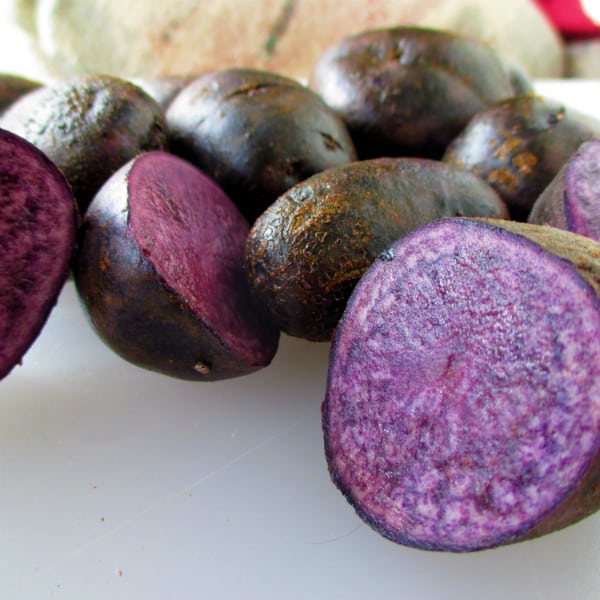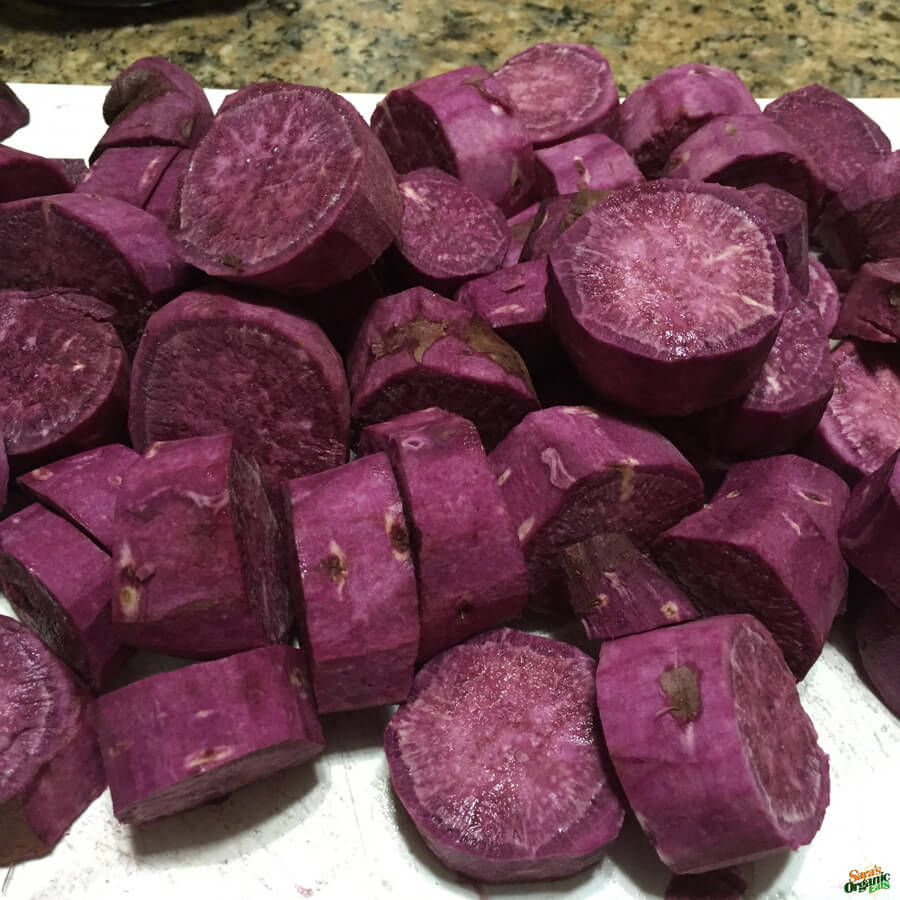
It’s important to note that all of these cancer studies were done in lab tests and not yet in human trials, but they show promising implications for future cancer research. This has been shown in other lab-based study’s for overall antimicrobial and anti-cancer inhibition and in bladder cancer cells. However, antioxidant consumption in the diet is currently shown to help reduce overall cancer risk and anthocyanin purple potatoes are no exception.Ī study looking specifically at purple potatoes found that baked purple potatoes and purple potato extract reduced colon cancer cell growth in lab tests. Cancer-Fighting FoodsĬancer is of course a complicated disease, with many factors both known and unknown. It’s thought that these compounds may decrease absorption of some carbohydrates and therefore reduce overall impact on blood sugar levels. When it comes to purple potatoes, their effect on the glycemic index is lowered due to the amount polyphenols and anthocyanins. While most people eat a variety of foods and don’t need to focus on blood sugar shifts after meals, those with diabetes or who rely on insulin to help with blood sugar control use the GI regularly. The glycemic index, or GI, is a measure from 0 to 100 of how single foods raise blood sugar levels. Purple Potatoes are Better for Blood Sugar Those are impressive results from a whole food source of nutrition and a reason to consume purple potatoes more often. Other studies looking at the connection between consuming purple potatoes and cardiovascular disease risk factors like high blood pressure and LDL cholesterol continue to show benefits when participants consume anthocyanin rich foods, like purple potatoes. Īnother study looking at consuming whole purple potatoes and blood pressure changes found that those who consumed one medium purple potato (about 200g) for two weeks had significant blood pressure improvements. Both the medication and purple potato extract groups saw significant blood pressure improvements but only the purple potato group saw higher levels of an antioxidant called superoxide dismutase, which has shown to be helpful in hypertension. In a 2015 study, researchers compared 180ml of purple potato extract to a common blood pressure medication, captopril.
#Purple potatoes skin
Anthocyanins may improve heart heathĪnthocyanins are mainly found in red and purple colored potato varieties in both the skin and the inner flesh these compounds appear to help reduce LDL cholesterol levels and fight oxidative stress a process known to increase heart disease risk. That’s good news for those who want the benefits that antioxidants provide but would rather enjoy a plate of roasted purple potatoes than steamed spinach or other dark, leafy greens. A recent study compared various colored potatoes and found that purple pigmented potatoes had a similar antioxidant power to spinach. Purple potatoes get their rich shade primarily from anthocyanins, a flavonoid with antioxidant, antibacterial, antiviral and anti-inflammatory activity. Richer colors signify more nutrition and antioxidant concentration which is why a cup of dark green kale leaves contains more nutrition than a cup of paler iceberg lettuce. When it comes to natural food pigmentation in general, the darker the color, the better. Purple Potatoes are an Antioxidant Powerhouse Color Matters The royal shade of red, blue or purple, found in pomegranates, elderberries, concord grapes, purple potatoes, and more, is a sign of anthocyanins, a potent antioxidant that helps to fight inflammation and offer chronic disease protection. So, before you begin your hunt for this nutritious starch, here's everything you might need to know about why purple potatoes deserve a second look.The color purple doesn’t just make food beautiful, it’s a vibrant sign of an item being packed with beneficial nutrients. On the slightly more niche end of the produce spectrum, you may not be able to find purple potatoes at every grocery store. But why are they purple? "Purple potatoes get their pigment from a class of flavonoids called anthocyanins (this is the same compound found in blueberries)," explains registered dietitian Molly Knudsen, M.S., RDN.



Typically in season during the fall but still available year-round, purple potatoes are a member of the Solanum tuberosum family and boast an earthy, nutty flavor that can be prepared in a variety of delicious ways. But while white and sweet potatoes often steal the spotlight, there's another lesser-known variation that should be gracing your table, as they boast an impressive variety of vitamins, minerals, and essential nutrients: purple potatoes. French fries, mashed potatoes, potato salad, the list goes on and on. If there's one universally loved ingredient that pairs well with nearly any dish and can be prepared in a practically infinite number of ways, it's potatoes.


 0 kommentar(er)
0 kommentar(er)
